Lab 8: Forensic Biochemistry
1/20
There's no tags or description
Looks like no tags are added yet.
Name | Mastery | Learn | Test | Matching | Spaced |
|---|
No study sessions yet.
21 Terms
Describe the biochemistry of luminol chemiluminescence with blood (Hint: 4)
Quinone derivative (aromatic ring structure with 2 carbonyl groups withing the ring structure)
Can be oxidized to produce 3-amino phthalate excited state, which is unstable
When it goes back to the ground state, energy is released in the form of light
Helps detect blood because blood cells are rich in hemoglobin, which has a heme ring with iron in it. Iron can act as a catalyst in the oxidation of 3-amino phthalate, which aids in the luminescence in luminol.
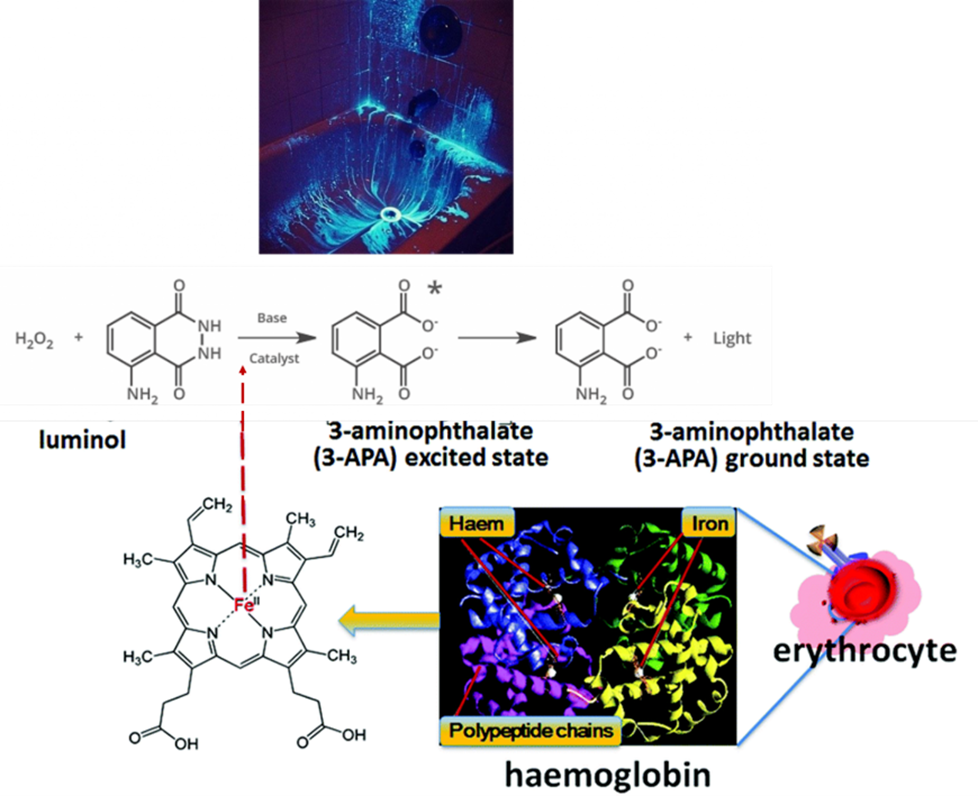
What does luminol detect?
Normally it detects trace blood, but can also trace other compounds that are able to oxidize 3-Amino pthalate, such as bleach, urine, and feces
What are the antigens of the ABO blood group?
Sugars
How are the antigens of the ABO blood group produced? (Hint: 2)
By a series of reactions in which enzymes catalyze the transfer of sugar units
A person’s DNA determines the type of enzymes they have, and, therefore, the type of sugar antigens that end up on their red blood cells
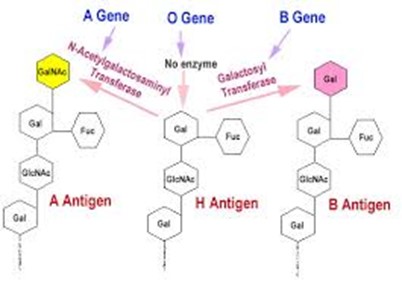
A person with a functional N-acetyl galactosamine transferase has what type of blood?
A
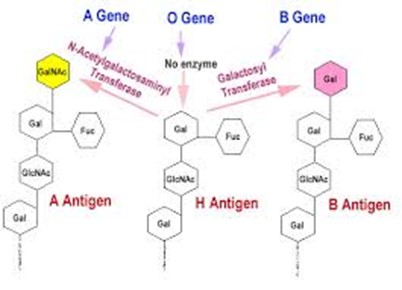
A person with functional galactosyl transferase has what type of blood?
B
A person with both enzymes has what type of blood?
AB
A person with no enzymes has what type of blood?
O
Type A blood has which antibodies and which antigens?
Anti-B
Antigen A
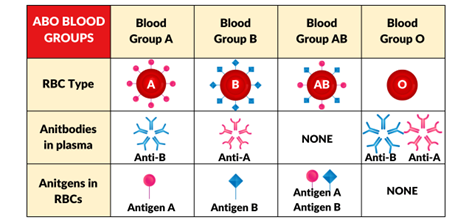
Type B blood has which antibodies and which antigens?
Anti-A
Antigen B
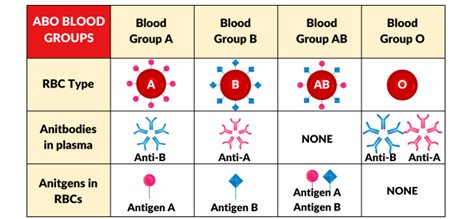
Type AB blood has which antibodies and which antigens?
None
Antigen A and Antigen B
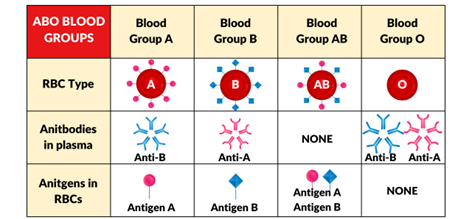
Type A blood has which antibodies and which antigens?
Anti-A and Anti-B
None
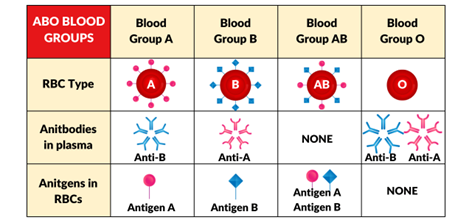
What happens if a person with A type blood accepts B type blood
The antibodies that the person has (Anti-B), clumps the red blood cells that contain the antigen B

Describe blood typing (Hint: 8)
Blood is put into different droplet sections
Different sections have different antigens added (A and B) and then one section adds Rh
If A clumps, the blood type is A
If B clumps, the blood type is B
If both clump, the blood type is AB
If neither clump, the blood type is O
If Rh clumps, then Rh positive
If Rh does not clump, then Rh negative
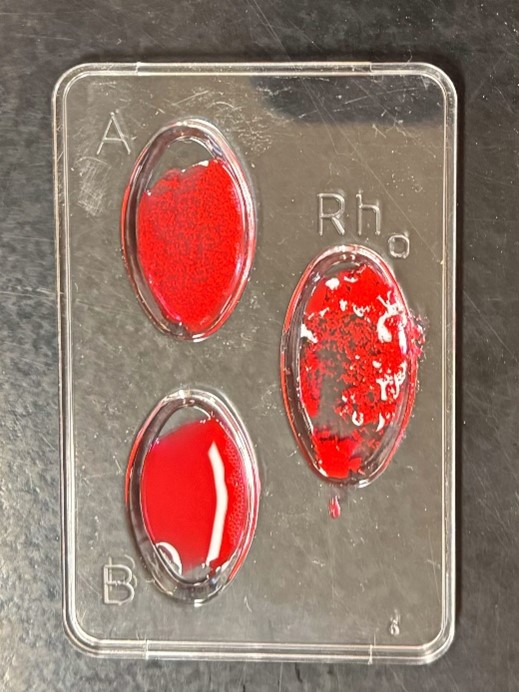
Significance of hydrogen, carbon dioxide, methane and hydrogen sulfide formation in decomposing bodies (Hint: 4)
Hydrogen and carbon dioxide are created by the fermentation of sugars
Methane is created from the reaction between hydrogen and carbon dioxide
Hydrogen sulfide is made from the breakdown of amino acids like cysteine and methionine
In decomposing bodies, these gases accumulate and inflate the body
Putrescine reaction and description (Hint: 5)
Decarboxylation reaction: Arginine -> ornithine (urea released) -> putrescine (CO2 released)
Diamine
Common name: 1,4-diamino butane
Smells like putrefied flesh and garbage
Contributes to the smell of bad breath
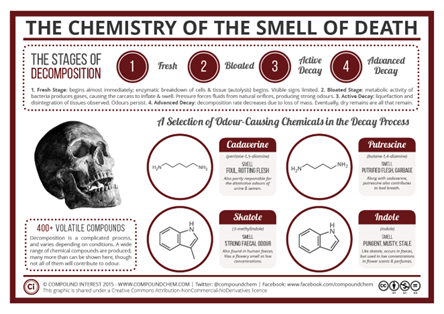
Cadaverine reaction and description (Hint: 5)
Decarboxylation reaction: Lysine -> Cadaverine
Diamine
Common name: 1,5-diamino pentane
Smells like foul, rotting flesh
Contributes to the smell of urine and semen
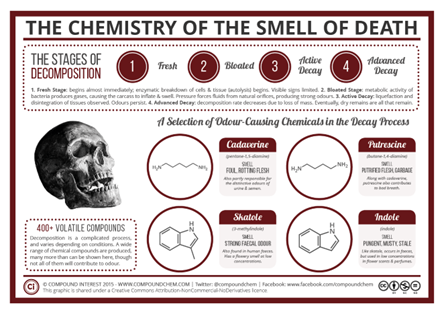
Indole reaction and description (Hint: 3)
Tryptophan breakdown by bacteria like E.coli produces indole
Has a pungent, musty, or stale smell
Contributes to the smell of feces and flower scents
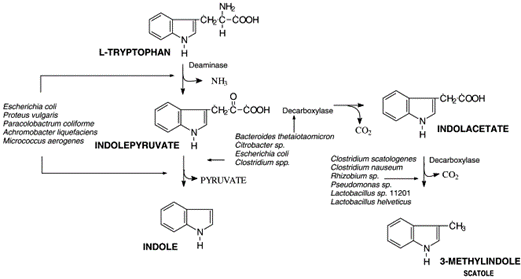
Skatole reaction and description (Hint: 3)
Tryptophan breakdown by bacteria other than E.coli produces skatole
Has a strong smell of feces
Contributes to the smell of feces and flower scents
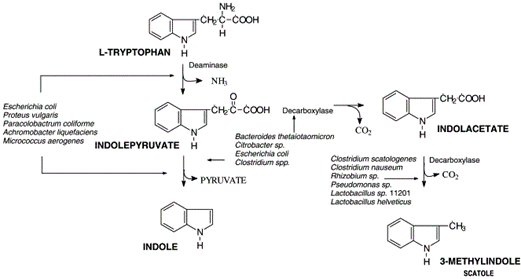
Describe the importance of urea cycle and relevance of putrescine to urea cycle (Hint: 4)
Transfers ammonia into urea, which is eventually excreted as urine
Creation of ammonia happens through the breakdown of amino acids that are built up from the breakdown of the human body
A buildup of ammonia can damage the body (especially if it enters the brain), so the urea cycle makes urea from ammonia to protect the body
Through this cycle, arginine ends up being created, which ends up being made into putrescine from decarboxylation

Describe polyamines (Hint: 2)
Polyamines are produced during the decomposition of a cadaver
Much of the body decomposition is performed by microbes that primarily operate through fermentation since the dead person cannot inhale oxygen and so fermentation products such as acids, alcohols and gases are produced.